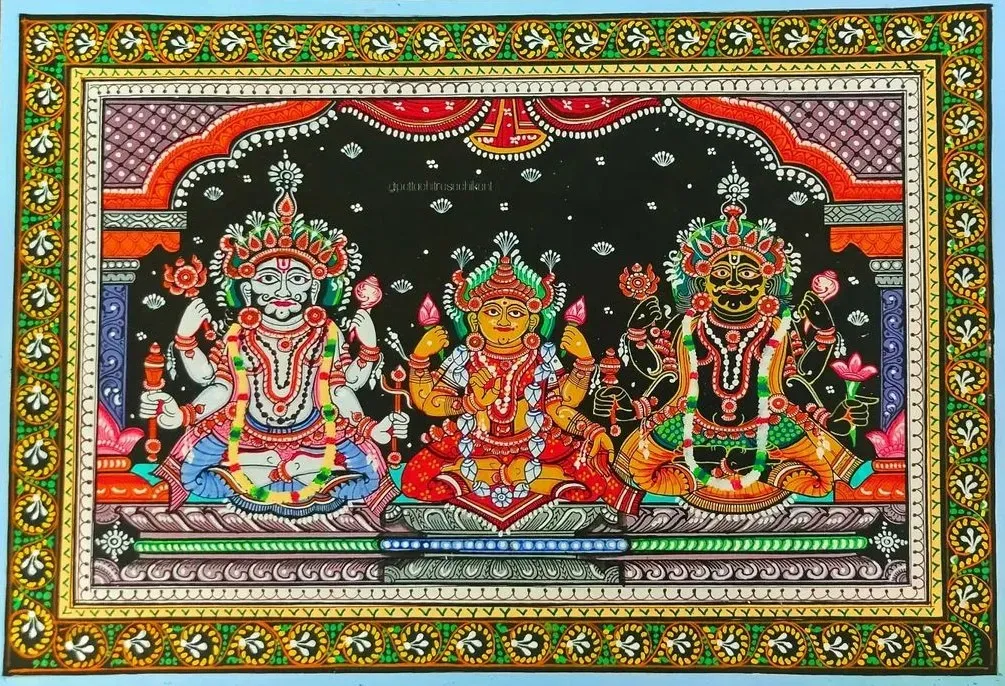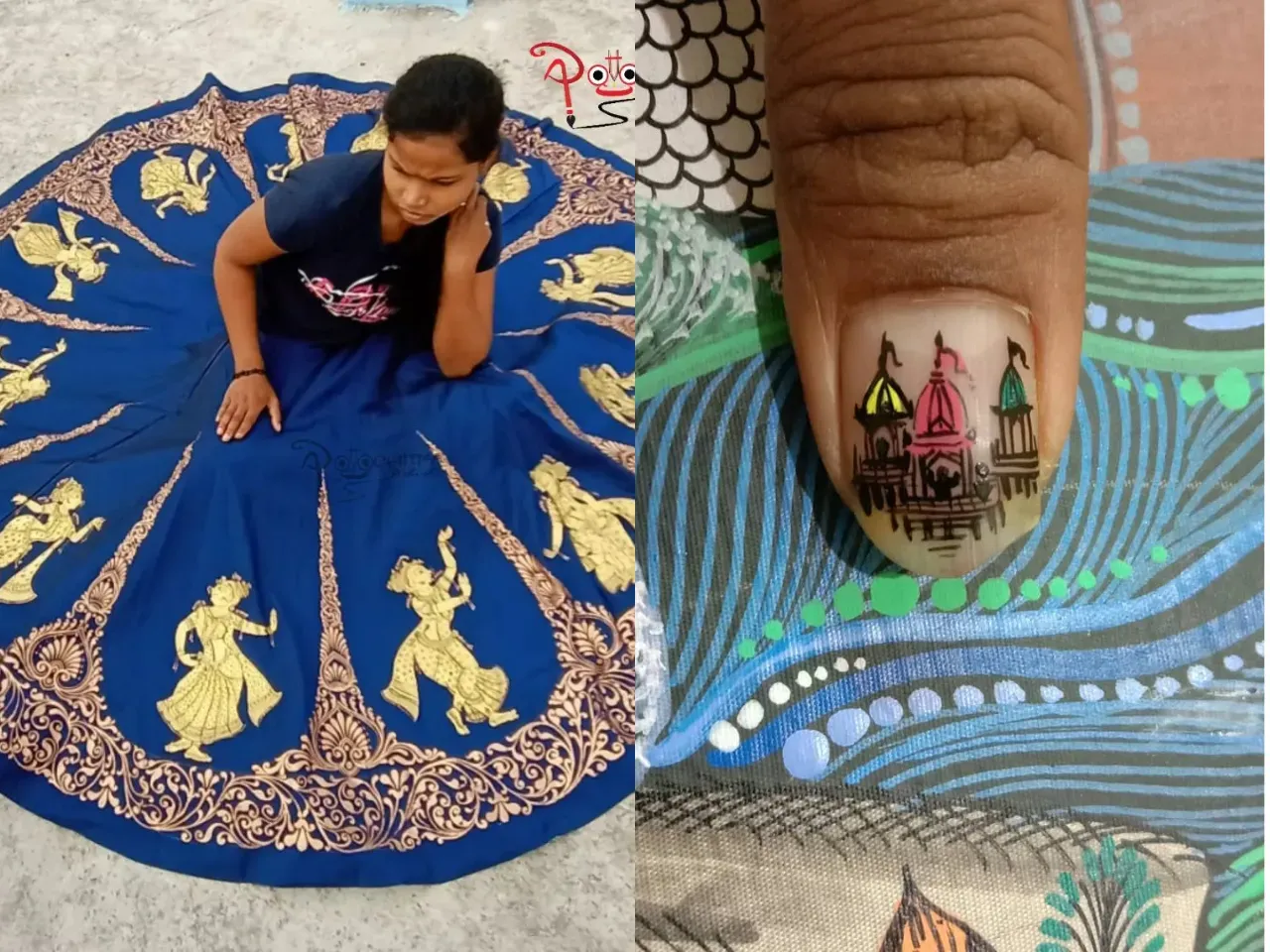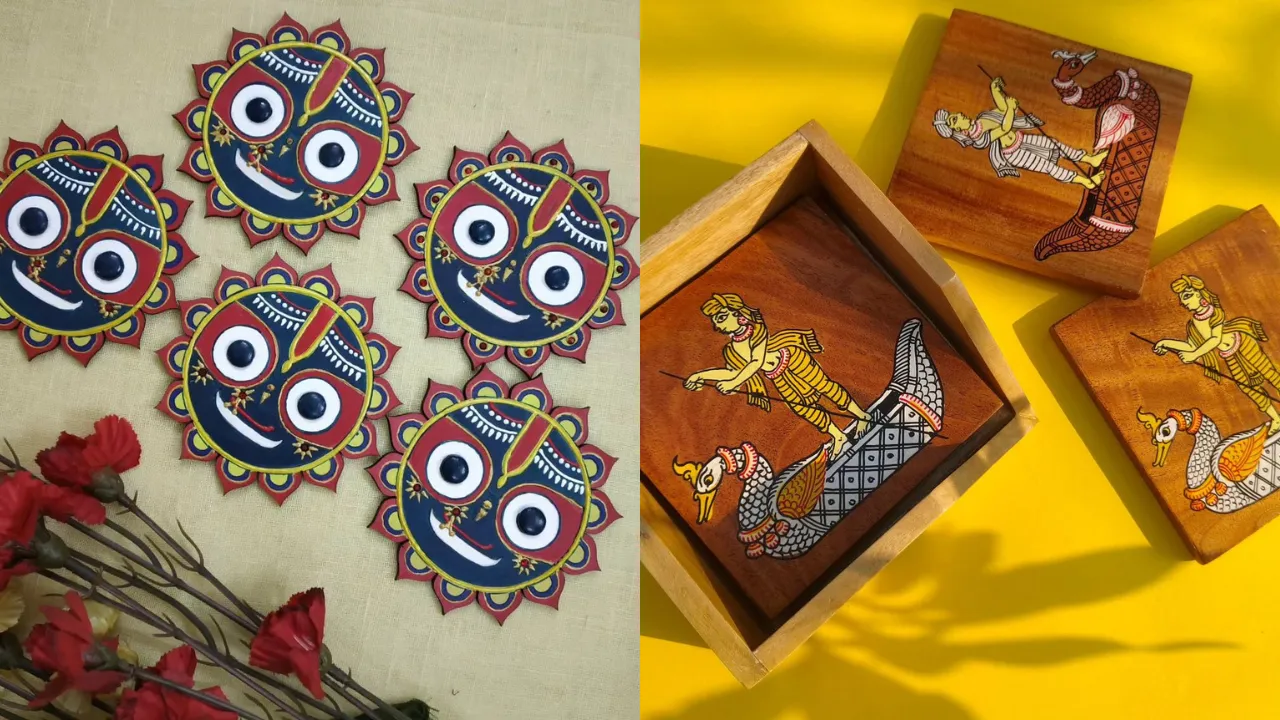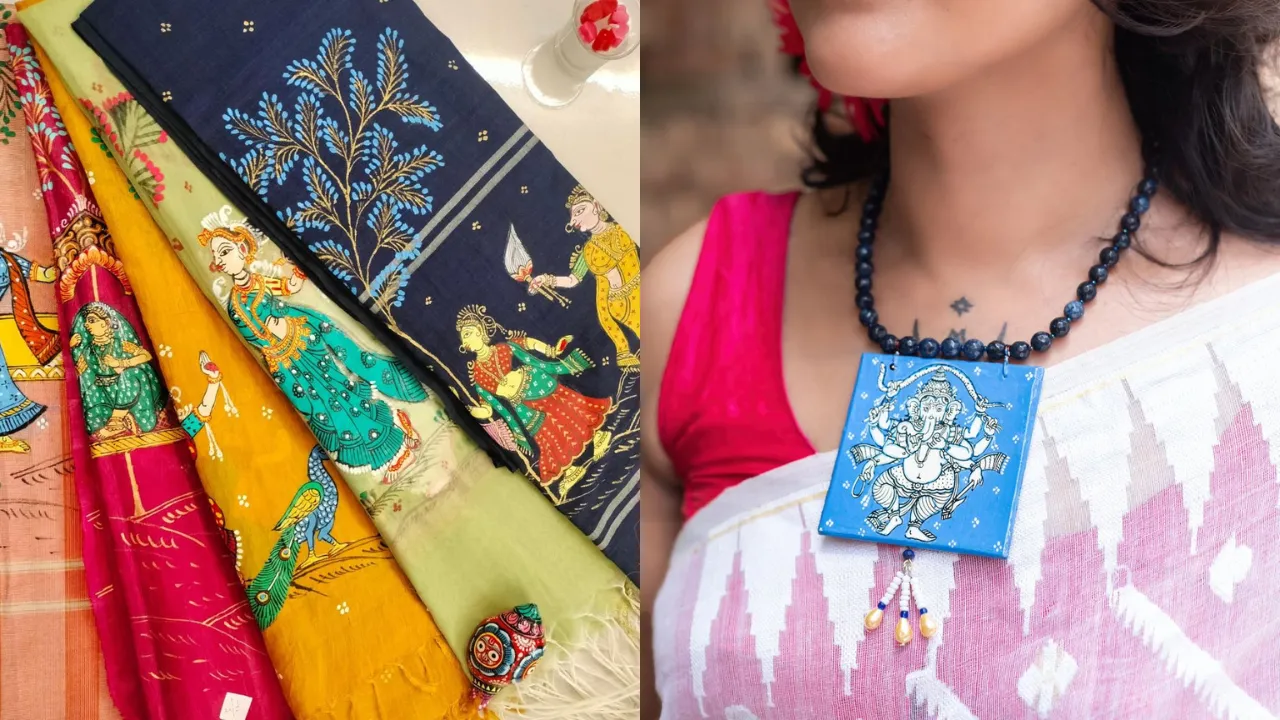In the heart of Odisha, there lies an art form that thrives in the state but is unknown to many outside. An art form known by the name of Pattachitra Art is dedicated to the revered Lord Jagannath – the saviour of Utkal. Pattachitra is a traditional cloth-based scroll painting that predominately originated in Odisha. The word “Pattachitra” is a Sanskrit term that means “painting on cloth.” Its history and the reason why this painting is directly linked to Jagannath are quite interesting. This section of #LocalWaliDiwali explores this unique craft with the businesses and artists working to preserve and promote it.
#LocalWaliDiwali
Local Samosa’s #LocalWaliDiwali series puts a spotlight on India’s rich heritage of arts, crafts, and handicrafts, along with the local mom-and-pop stores that have been serving their communities for generations. This initiative celebrates the perfect blend of tradition and innovation, focusing on the most promising local stores that are at the heart of their cities, known for reviving traditional Indian crafts across various categories.
This Diwali, through this series, we are committed to showcasing the best local artists, craftsmen, and small businesses that preserve Indian heritage through their products. By putting these gems on the map, we aim to connect them with people beyond their city, giving these local businesses the visibility, boost, and clientele they deserve.
The painting that replaces the sick god for a few days
The earliest examples of Pattachitra paintings are found in the village of Raghurajpur in the Puri district of Odisha which is still famous for this art form. It is believed to have originated in the 12th century B.C. These paintings were originally created for ritual use and as souvenirs for pilgrims to Puri, as well as other temples in Odisha.

It is said that every year before the Rath Yatra, Lord Jagannath falls sick and is quarantined for 15 days. The deity is then taken off the throne for treatment during this period called Anasara. “This is the time when there is no deity on the throne and since it cannot be empty, a unique Pattachitra Painting known as ‘Anasara Patti’, made by the artists of Raghurajpur Village (the village of Pattachitra Painters), is placed on it for the days the god is undergoing treatment,” says Sachikanta Sahoo, a Pattachitra artist from Odisha who also works on the committee for the Jagannath temple. The Anasara Patti depicts Lord Jagannath in the form of Anantnarayan – Subhadra (the sister of Krishna) and Balarama (the elder brother of Krishna) in the form of Bhubaneswari and Balbhadra (Anant Vasudev). These representations are placed on the throne and worshipped by devotees for a few days in place of the actual deity.
This ritual has been going on for years but yet only a few people know about it. To spread it to the masses, artists like Sachikant Sahoo and Ashish and businesses like Madhukaari, Chitra Lipi Creation, Aabhikalpa Studio and Meraki by Tanu are stepping their foot forward.
Sachikant aims to promote the Pattachitra through his paintings, customised products and his involvement as a member of the committee in the Puri temple. He also tries to replicate his paintings in everyday products and some of his best creations are the ‘Pattachitra Kettle’ and the ‘Pattachitra Bottle’.

Ashish is another artist from Odisha who has been making Pattachitra Painting for 16 years and has studied this art form deeply. He says, if these paintings look intricate to you, the process of making the cloth is even more complex.” The process of making the canvas starts with applying chalkstone powder on a used saree or curtain, then a paste made with Imli (tamarind) seeds is applied on the layer of chalk powder, and this cloth is then dried for approximately 24 hours in the sun. Once dried, the cloth is rubbed against a plain stone to give it a fine texture and flat surface and used to make the painting. Ashish uses this natural canvas to make products like saree and nail art with natural colours made with different materials, like kerosene smoke mixed with wood apple tree glue to get the black colour, conch shell powder mixed with the same glue to make the white colour, and gold mining stone to obtain red colour. Elaborating the process further, Ashish says, “These pastes are made into a coconut shell and mixed using only a finger to maintain consistency and prevent the colour from spoiling.”

The canvas of this art is shared by homegrown brands and artists running their ventures with products led by the concept of Pattachitra. For Diwali gifting and decor, you can check out Meraki by Tanu, who deals in customised hand-painted clutch purses and fridge magnets with traditional Pattachitra motifs. Aabhikalpa Studio has some cute little tea-coffee coasters to set the evening chai mood with traditional art and vases and other decor items to elevate your space this Diwali.
You can order from Meraki by Tanu via DM and Aabhikalpa Studio via DM or text: 80187 60414.

If we move from decor, the next thing that Pattachitra art finds its form in is clothing and accessory. Madhukaari is a jewellery and watches brand that has some timeless jewellery pieces featuring Pattachitra art. This jewellery can be paired with Chitra Lipi Creation’s handpainted Pattachitra sarees with various motifs that portray stories and tales of Odisha. This ensemble during Diwali parties will surely get you appreciation.
You can order from Chitra Lipi Creation’s via DM and Madhukaari via DM or WhatsApp: 91237 99094.

Want us to feature any local stores or artists who are preserving and rejuvenating Indian arts, crafts and handicrafts? Then write to us at content@localsamosa.com!
This post was originally published on this site be sure to check out more of their content







